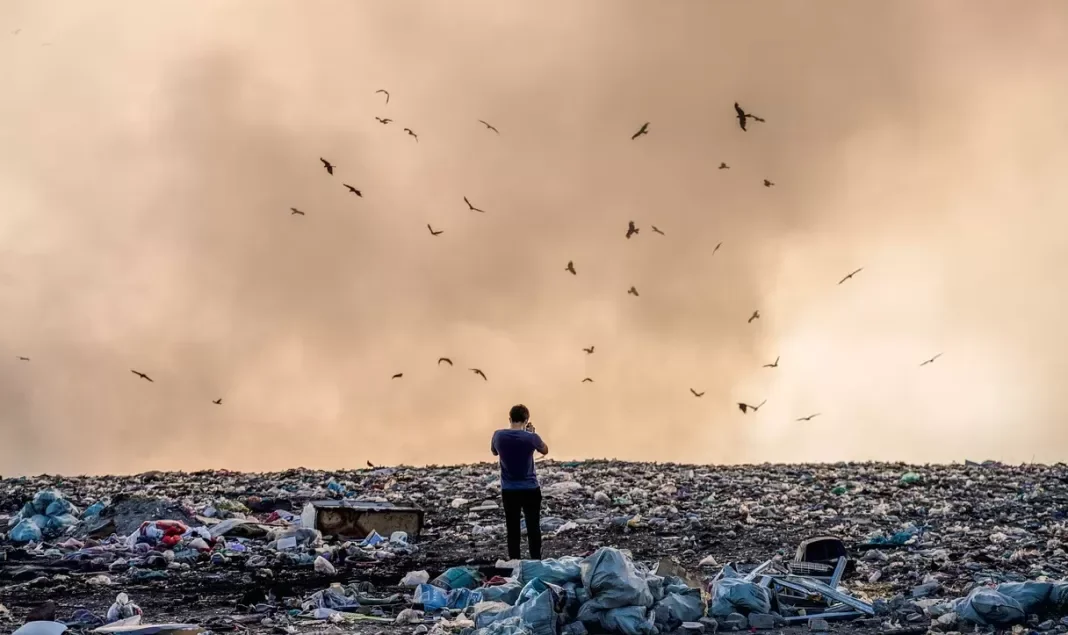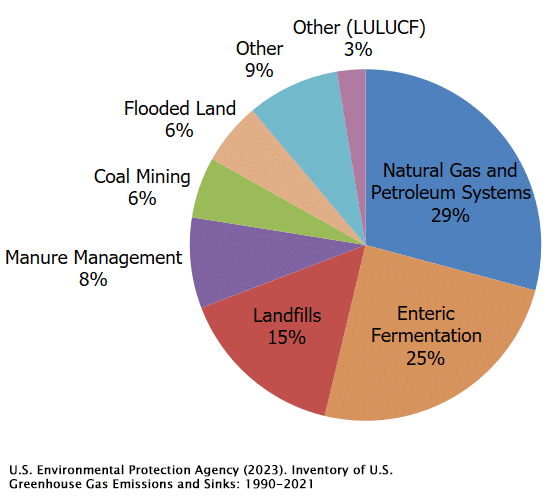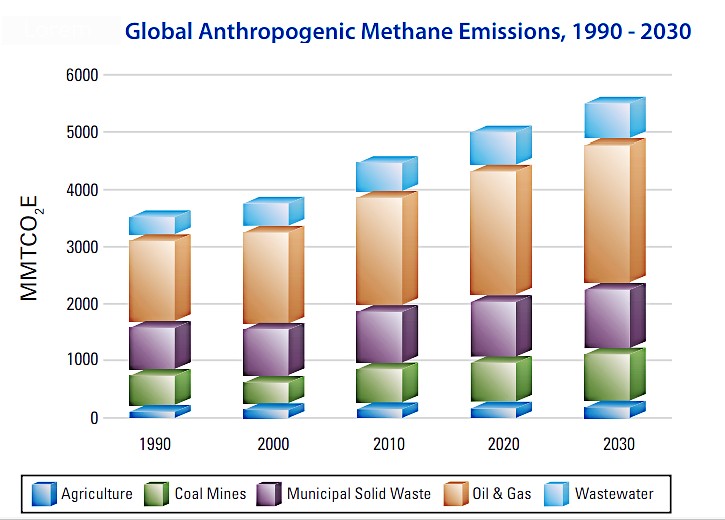A recent study published in the journal Science highlights the crucial need for improved monitoring of landfill emissions as part of climate change mitigation policies. The findings reveal that methane emissions from U.S. landfills are significantly higher than previously estimated by the Environmental Protection Agency.
The study is led by the nonprofit Carbon Mapper and scientists from NASA’s Jet Propulsion Laboratory, EPA, and other institutions. The researchers conducted aerial surveys of over 200 active landfills from 2018 through 2022.
This comprehensive effort represents the largest direct measurement-based study of municipal solid waste sites to date.
Landfills’ Hidden Environmental Impact
In 2018, Americans disposed of around 146.1 million tons of waste in landfills, with organic decomposition accounting for about 50% of methane emissions. Over half of the dumps are methane super-emitters, generating over 100kg of the gas per hour.
Methane, a potent greenhouse gas, has a significantly higher heat-trapping capability than carbon dioxide and thus, contributes to climate change. It is 80x more potent a GHG than CO2.
According to the EPA, human activities contribute significantly to global methane emissions, accounting for around 50% – 65% of the total. In the United States, landfill emissions stand out as the 3rd-largest source of human-generated methane, responsible for almost 15% of such pollution in 2021.
U.S. Methane Emissions, By Source
According to the International Energy Agency estimates, methane is responsible for almost a third of global temperature rise since the Industrial Revolution. The IEA reported in March that fossil fuel production and use resulted in almost 120 million metric tons of methane emissions in 2023. And the U.S. emerged as the largest emitter from oil and gas extraction.
Moreover, exposure to methane poses health risks, leading to an estimated 1 million premature deaths annually. These are the major reasons why attention to mitigating the release of this potent GHG intensifies.
Rob Jackson, an environmental scientist at Stanford University, emphasizes the importance of airborne data in verifying ground observations, stating that methane emissions have been a concern for decades.
The lead author, Dan Cusworth, also highlights the potential for mitigating climate change by addressing high-emission sources and persistent landfill emissions. The precise identification of leaks is crucial for reducing methane emissions effectively.
The study was conducted across 18 states using imaging spectrometers on aircraft between 2016 and 2022. The imaging technology is designed to measure concentrations of methane in the air. Remote sensing technologies, such as satellites, aircraft, and drones, offer improved methods for monitoring landfill emissions.

Additionally, innovations like methane valve caps and leak sensors can help reduce emissions at their source. Kait Siegel from the Clean Air Task Force highlights the feasibility and cost-effectiveness of implementing such technologies in the waste sector.
Innovative Solutions for Curbing Methane Emissions
The researchers’ analysis unveiled striking findings, indicating that 52% of landfills exhibited “observable point source emissions.” This contrasts sharply with the 0.2% to 1% of oil and natural gas sites in the U.S. that show similar emissions.
Moreover, nearly 60% of the landfills demonstrated emissions that persisted over months or years. This is in contrast to the irregular, short-duration events observed in the oil and gas sector.
Carbon Mapper emphasized that current methods used to report facility emissions, such as the EPA’s Greenhouse Gas Reporting Program (GHGRP), are insufficient in capturing or accurately representing large methane sources. On average, aerial emission rates were 1.4 times higher than those reported by the GHGRP.
Many landfills utilize specialized wells and pipes to collect methane gas emitted from decomposing waste. These systems aim to mitigate methane emissions by either burning off the gas through controlled flaring or harnessing it for energy generation, such as electricity or heat production.
However, despite these measures, leaks in the wells and pipes can occur, releasing methane into the atmosphere.
The researchers noted that pinpointing methane leaks is crucial in helping them have a clearer picture of methane emissions. Plus, it can also aid landfill operators in addressing leaks promptly.
The Environmental Defense Fund and Carbon Mapper are collaborating on initiatives to launch satellites for monitoring methane emissions from landfills and other sources.
These initiatives underscore the growing recognition of the importance of comprehensive monitoring in addressing climate change. This is crucial especially that the Global Methane Initiative (GMI) reveals that these emissions will increase by 2030.
As the study sheds light on the magnitude of landfill methane emissions, it calls for immediate action to curb this potent greenhouse gas. With innovative monitoring solutions and concerted efforts, we can mitigate methane emissions and its harmful impact, paving the way toward a more sustainable future.



